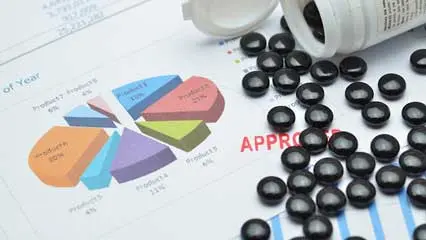A liquid cleanser specifically made for the exterior vaginal area, feminine hygiene wash balances pH levels, keeps the vagina clean, and guards against infections and irritation. It is usually gentle, fragrance-free or mildly scented, and enhanced with calming components like lactic acid or aloe vera, in contrast to ordinary soaps or body washes. These products assist in getting rid of microorganisms that cause odors without disturbing the intimate area's natural vegetation. Particularly helpful are feminine washes in hot weather, after exercise, and during menstruation. Growing knowledge of intimate health and cleanliness has led to an increase in the popularity of these items as women seek protection and freshness on a daily basis.
Drivers:
Globally, women's growing awareness of intimate health and hygiene is driving significant growth in the feminine hygiene wash industry. Urbanization, rising literacy rates, and easier availability to personal care items have all increased demand for specialist hygiene goods. The significance of pH-balanced and dermatologist-tested feminine washes is another important topic that social media and health influencers help consumers learn about. There is a greater requirement for comfort and freshness throughout the day due to the active lifestyles and expanding female workforce. Furthermore, consumers who are health-conscious and looking for safer, chemical-free hygiene solutions have been drawn to innovative natural and herbal formulations.
Challenges:
There are a number of obstacles facing the feminine hygiene wash business, despite its increasing popularity. Particularly in conservative and rural areas, product uptake is still constrained by social stigma and cultural taboos surrounding intimate hygiene conversations. Other factors that discourage potential customers are misconceptions regarding the necessity of utilizing such items and worries about possible adverse effects or allergic responses. Other difficulties include high product costs and restricted accessibility in economies with low incomes or underdeveloped marketplaces. Customers may also become less trusting of commercial products if they have doubts about their long-term efficacy and safety. The capacity of these items to reach a wider audience is further hampered by the absence of adequate information regarding feminine health.
Market Trends:
A move toward natural, organic, and dermatologist-safe ingredients is one of the major trends in the market for feminine hygiene washes. To reduce the chance of irritation, consumers are increasingly looking for products free of parabens, sulfates, and artificial perfumes. To gain trust, brands are increasingly emphasizing gynecologist-recommended goods and pH-balanced compositions. Traditional boundaries have been broken by the growth of e-commerce and direct-to-consumer channels, which have made these products more discreet and accessible to buy. Companies are also diversifying their product offerings to accommodate a range of age groups and sensitivities, such as menopausal or pregnancy items. Consumer decisions are also being influenced by sustainability initiatives and packaging improvements.
Global Feminine Hygiene Wash Market Key Players:
Bodywise (UK) Limited, Edgewell Personal Care, Essity Aktiebolag, GLENMARK PHARMACEUTICALS LTD, Kao Corporation, KCWW, Maxim Hygiene, Ontex BV, Premier FMCG (Pty) Ltd, and Prestige Consumer Healthcare Inc are just a few of the major market players that are thoroughly examined in this market study along with revenue analysis, market segments, and competitive landscape data.
Global Feminine Hygiene Wash Market Segmentation:
By Product: Based on the Product, Global Feminine Hygiene Wash Market is segmented as; Menstrual Care Products, Cleaning & Deodorizing Products.
By Distribution Channel: Based on the Distribution Channel, Global Feminine Hygiene Wash Market is segmented as; Supermarkets, Drug Stores, Online Retail Stores, Others.
By Region: This research also includes data for North America, Latin America, Asia-Pacific, Europe, Middle East & Africa.
This study also encompasses various drivers and restraining factors of this market for the forecast period. Various growth opportunities are also discussed in the report.





































